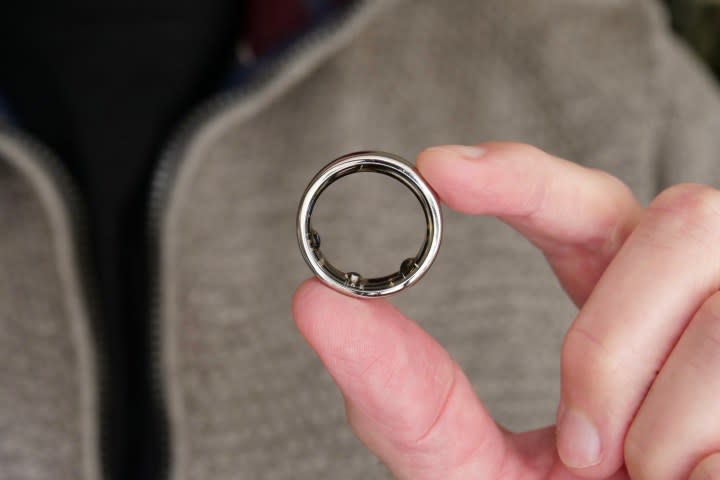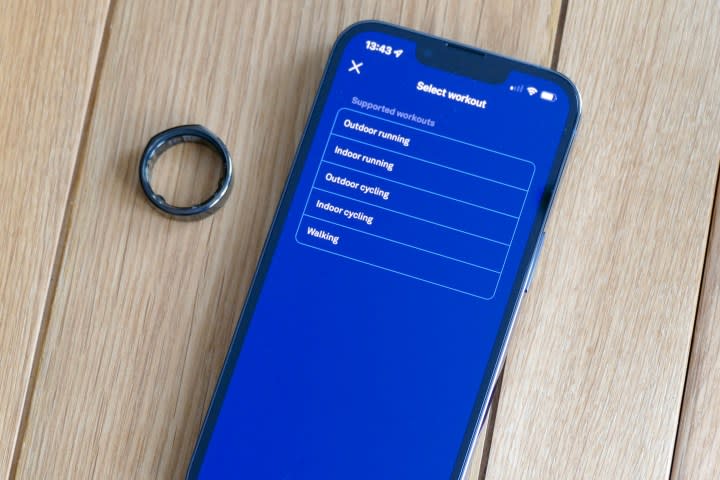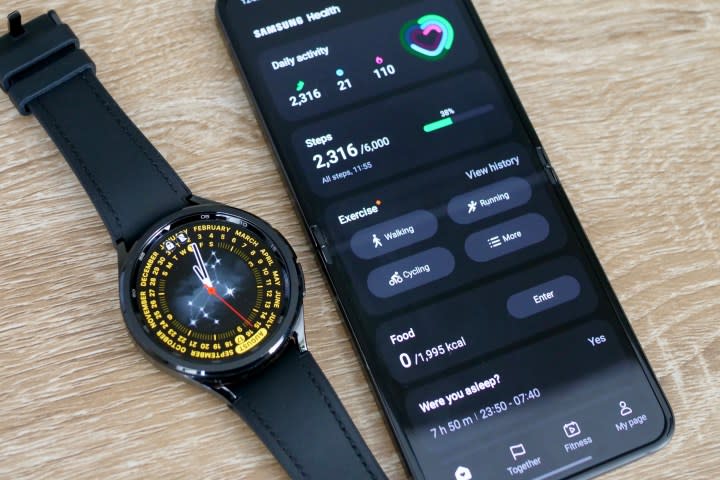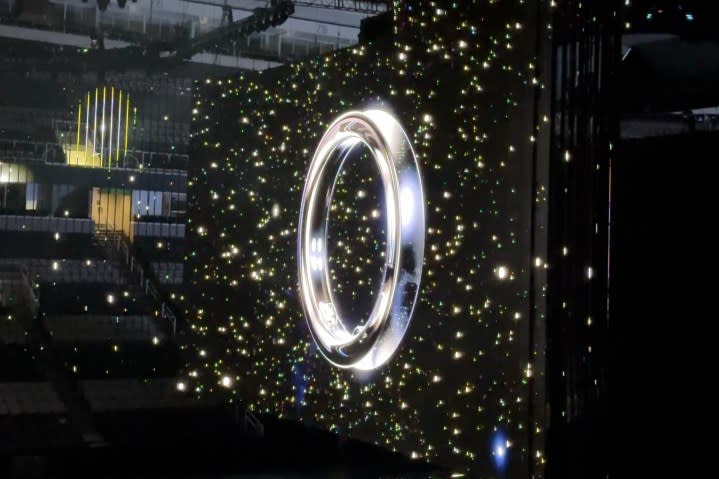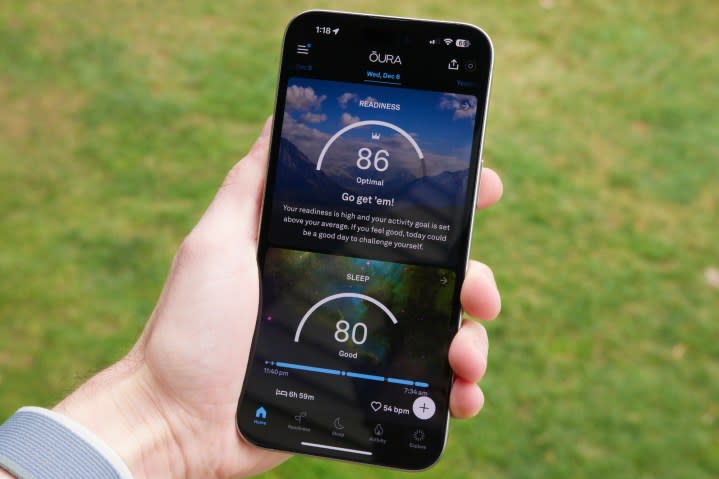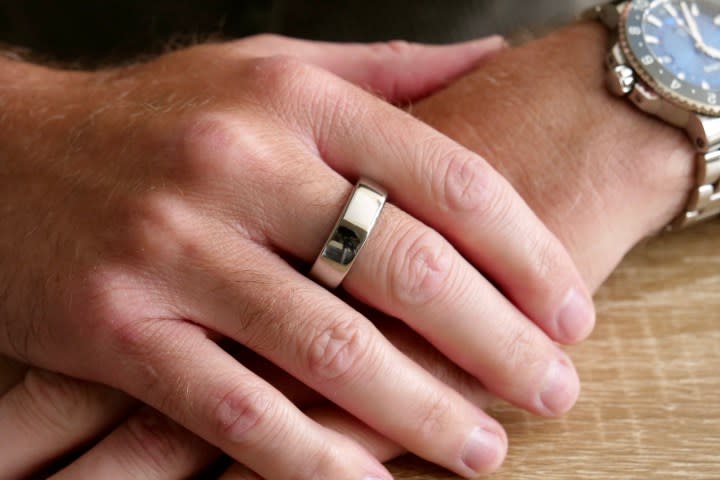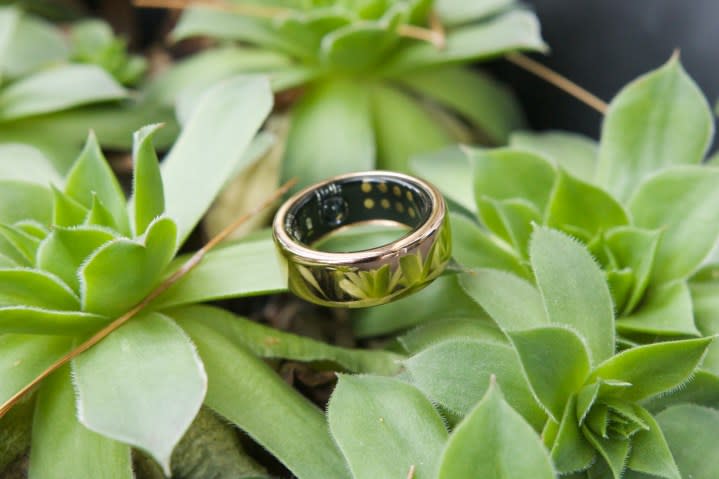I’ve worn an Oura Ring for years. Here’s what I want from the Galaxy Ring
This article contains affiliate links; if you click such a link and make a purchase, Digital Trends and Yahoo Inc. may earn a commission.
My appreciation of the Oura Ring smart ring is well documented, and I’ve worn it almost continuously for more than two years. It means I am very familiar with both its positive and negative aspects and have a good idea of where competitors need to shine if they are going to compete, as it remains the smart ring to buy at the moment.
Samsung used its January 2024 Galaxy Unpacked event to let the world know the rumored Galaxy Ring is real and coming at some point in the future. It’s all very exciting, as Samsung definitely knows what it’s doing when it comes to hardware and health tracking. But smart rings are still fairly new devices, so it has plenty to learn, too.
This is what I think Samsung will need in order to drag me away from the Oura Ring, and also what it needs to learn from its primary competitor.
Basic fitness tracking for everyone
One of my biggest ongoing gripes with the Oura Ring is its inability to actively track a basic strength or HIIT workout when you want it to. You can track walking, running, and cycling manually, but that’s all. Samsung needs to add more comprehensive on-demand workout tracking to the Galaxy Ring right from the start. It doesn’t have to be as complete as the Galaxy Watch 6, but it does need to provide more than just the basics.
The Oura Ring is good at auto-tracking different workouts that involve a lot of movement, and an exercise feature the Oura Ring has gained recently that I love is its auto-workout tracking for housework. It sounds a bit silly, but I’d never choose (or remember) to track housework on a smartwatch, so having the Oura Ring pick it up is really helpful. It can make up a lot of your daily calorie burn and activity, so it’s nice to see it recognized, and it would be fantastic for Samsung to think differently about the Galaxy Ring, too.
Don’t try to make it a smartwatch replacement
Having said that I want to see a more comprehensive workout tracking system, I don’t want the Galaxy Ring to be too comprehensive. The Oura Ring does a decent job of doing just enough outside of sleep tracking to make it worth wearing all day and overnight, but it never strays too far into smartwatch territory — and it’s a good thing. Samsung needs to see the Galaxy Ring as its own device and separate from the Galaxy Watch 6.
It does not need notifications, buttons, or anything that will ruin the battery life. Smart rings are best when they are silent partners, watching over you rather than trying to get your attention. Instead, Samsung should take its updated sleep tracking feature and algorithm and refine it even further for use on the Galaxy Ring, as it’s one of the Oura Ring’s great strengths, and it needs to be the best possible if it’s going to compete.
No subscription
You pay $6 per month for the pleasure of using Oura’s app for the Oura Ring, and this does not need to be a feature on the Samsung Galaxy Ring. I have voiced my concerns over a subscription-based Samsung fitness tracking plan, as it’s a definite (and unwelcome) industry trend, and Samsung itself has made concerning noises about such a move in the past.
Oura is not Samsung and does not have Samsung’s budget, so a subscription package is understandable. Plus, the Oura app is superb, so you can at least see where some of the money goes. Samsung likely has a whopping budget for everything and probably doesn’t need additional subsidy from us to launch and support a smart ring. I’m certainly hoping that, like the Galaxy Watch 6, the Galaxy Ring’s fitness suite and app will be subscription-free.
A simple, clean app
Samsung’s Health app is decent, but the Oura Ring’s app is superb. It’s so easy to find what you’re looking for, the layout is clear and logical, and the basic daily scores — Readiness, Sleep, and Activity — are delightfully simple and informative. It doesn’t bother you with many notifications, you can tailor your preferences for how it sets goals, and it is incredibly reliable.
People don’t necessarily purchase smart rings as an alternative to a smartwatch or fitness tracker, and very in-depth data doesn’t always need to be front-and-center, which the app needs to reflect. It’s something Oura has got exactly right, and Samsung really needs to do the same with the Galaxy Ring. I don’t think it will work as well if it’s simply the same Health app we have with the Galaxy Watch, as individual requirements and the purchasers themselves are potentially quite different for the two.
Going in a different direction to the Oura Ring is fine, and it’s how Ultrahuman is approaching smart rings, but additional complexity and a greater emphasis on performance and training may make an already niche device even more niche and not play to its design strengths. I’ll be hoping the Galaxy Ring takes Oura’s, and not Ultrahuman’s, approach to its app.
Comfort needs to be absolutely right
If you don’t wear a health tracking device, you won’t get any of its benefits, and getting a smart ring right so you wear it all the time is much harder than getting a smartwatch right. There’s also the fact many people who consider the Galaxy Ring may never have worn a ring before ever, and it needs to not only fit well and be comfortable all day and night, but it needs to look good too.
The Oura Ring does all these things very well, and it’s the benchmark against which the Galaxy Ring will be judged. Samsung’s smart ring needs to avoid unnecessary thickness and sharp edges, it needs to be lightweight, and you shouldn’t feel the sensors on the underside. In fact, you shouldn’t notice the Galaxy Ring at all once you’ve worn it for a few days.
It needs to launch in several different finishes to appeal to more people, in multiple sizes (providing half-sizes would be a considerable benefit, as the Oura Ring does not), and with a sizing kit available for those who want it. I’d also love to see a version that’s tough enough to withstand scratches from metal or other hard objects and that’s perhaps a neater solution than Oura’s silicone case.
Ongoing support is essential
Finally, Samsung must not forget about the Galaxy Ring. It needs ongoing software support and needs to receive regular feature updates and improvements. A lot of people will be introduced to smart rings through the Galaxy Ring and should feel like their investment in “new” technology is being recognized over time. Oura has not always been very good at this but has improved recently.
Smart rings, and smart jewelry in general, are exciting new wearable technologies that are slowly becoming more common, but Samsung is the first truly big name to take the plunge. The Galaxy Ring will inevitably gain plenty of attention, and Samsung needs to be at the top of its game for it. If it’s a disappointment, there’s a chance fewer companies or buyers will be prepared to take the risk on one again.
I can’t wait to see how the Galaxy Ring turns out.
